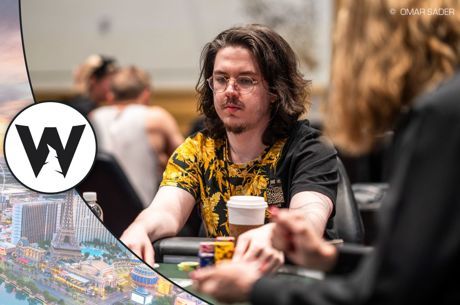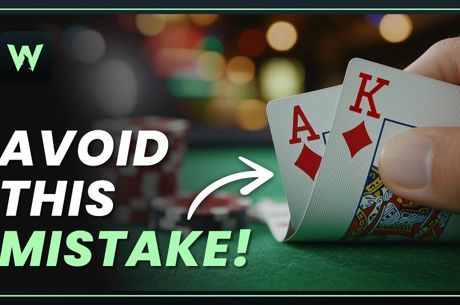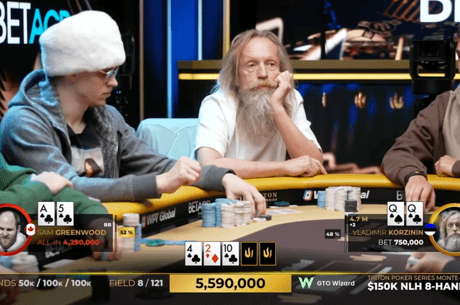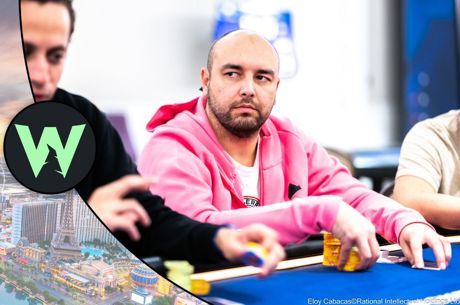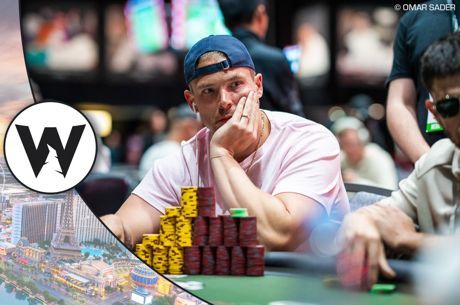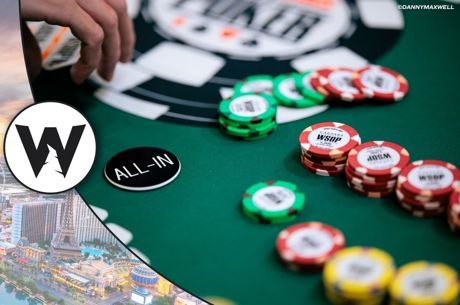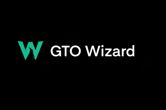Is This EPT Barcelona SHR Triple-Barrel Bluff GTO Wizard Approved?

Allow us to set the scene. With three players left in this year's EPT Barcelona €100,000 Super High Roller, with millions of euros in prize money on the line, Sean Winter runs an audacious triple-barrel bluff right into Seth Davies.
Both players went for it without hesitation in this hand, but was it actually GTO? Let’s have a brief look at preflop and what optimal play looks like with the help of GTO Wizard.
GTO Wizard: How to Play Pocket Jacks
Preflop Analysis
It's worth saying from the start, that despite both being among the best poker players in the world, Winter should never limp the small blind with Jx4x off-suit, and Davies should never check his option with Qx4x off-suit, according to GTO Wizard's custom-made ICM solution.
However, as we will see Jx4x is just one hand under the limping threshold, and Qx4x doesn’t check while Qx5x and Qx3x do. We assume that both players were either trying to actively exploit each other by altering their strategy, or that they barely missed the GTO play by a hair.
SB preflop strategy (green means limp)
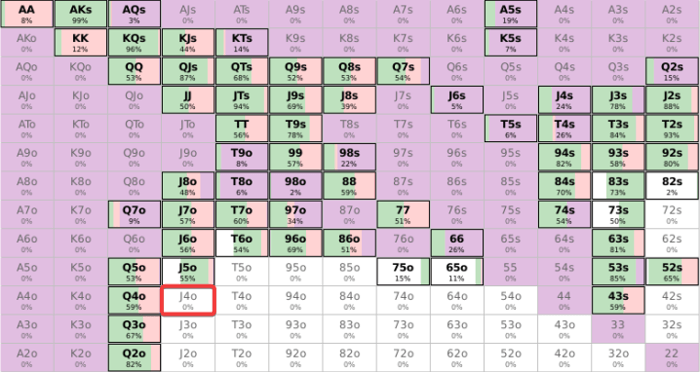
BB preflop strategy (green means check)
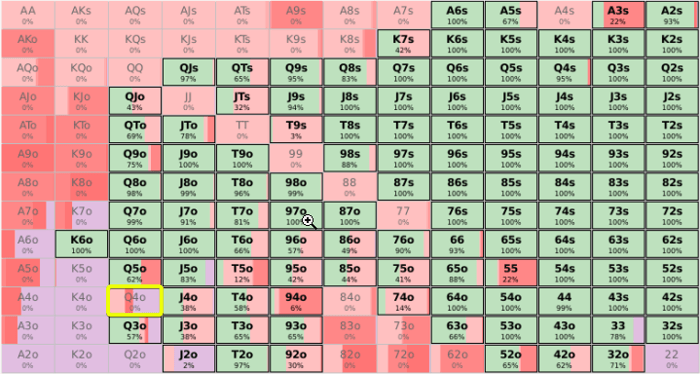
Postflop Analysis
It turns out that preflop wasn’t played perfectly according to theory, but both player’s preflop strategy wasn’t too far off of optimal play. It’s safe to say that this GTO strategy is not easy to pull off accurately. If both play postflop well, they shouldn’t be missing out on relevant amounts of EV anyway.
Flop
Here we see the SB betting most of his hands for a small size, including Winter’s J♦4♣. The reason he can bet with a high frequency is, that as the limper we do well on broadway boards since we trap with broadway hands preflop, while the BB should raise his strongest broadway hands and premiums.
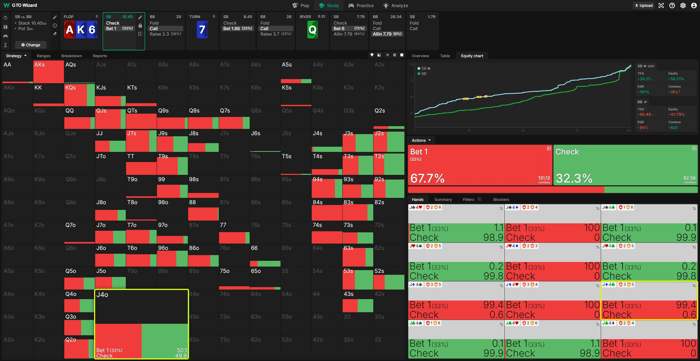
SB should bet his Jx4x on the flop only if he has a diamond blocker in hand to increase Davies’ folding frequency by removing some of his possible calling combos (flush and backdoor flush draws), while also drawing to the backdoor flush draw himself.
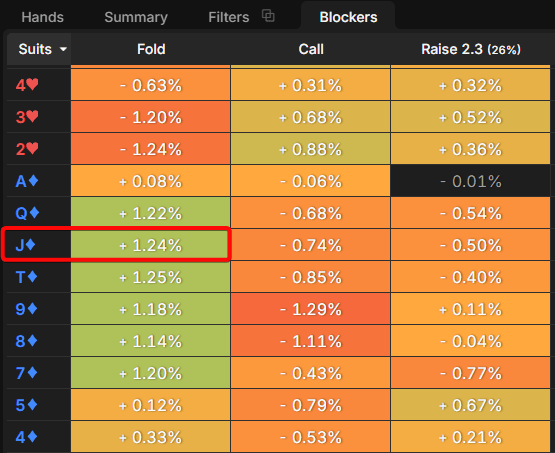
Using the Blockers tab, we can see that the BB will fold 1.24% more often when the SB holds the Jd while betting. This might not seem like a lot, but in poker such small edges add up over time and become very relevant.
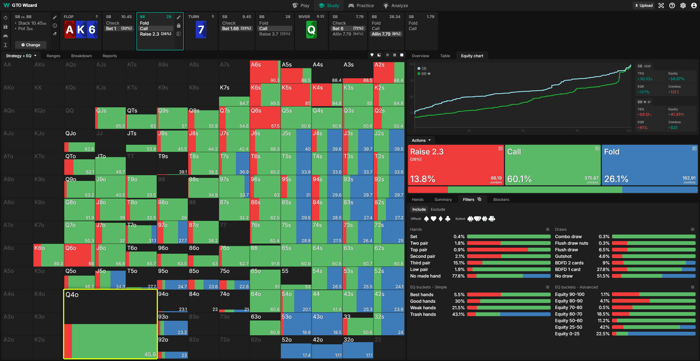
Here we can see that Qx4x should never fold, even without a backdoor flush draw. In fact, the threshold for calling the flop is merely a backdoor straight draw. The reason for that is quite simple: since SB bets a lot of hopeless bluffs with very low improvability, BB’s Queen high has still an impressive 46% equity after facing the bet (which is more than enough to call).
Looking at both player’s ranges going to the turn, we can see that both remain very wide after the flop action. This will become more important on the later streets, so let’s keep this fact in mind.
Turn
On the turn both players played perfectly. SB should bet most draws that he can’t check/call, and BB should call most of his draws, including all flush draws. SB’s should bet ~50% of his range, and BB should fold only around ~24% of his range.
SB strategy with Jd4c
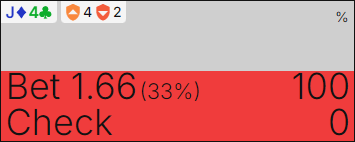
BB strategy with Qh4d vs a 33% bet

The bet by SB is designed to make BB fold slightly better hands like Queen high, better Jack high, and his weak gutshots. These all call flop but then always fold the turn when missing their backdoor straight draw because SB continues to have a slight equity advantage when the 7d turn is dealt.
Overall, SB gets to bet slightly tighter (only bluffing with draws), and BB gets to defend slightly tighter on the turn (folding worse than draws).
River
This is easily the most interesting street of the whole hand. SB bet most of his stack while leaving behind less than two big blinds, and BB called with just third pair on a board with possible straights and flushes. This can’t be GTO, right? Well, let’s see:
SB river strategy
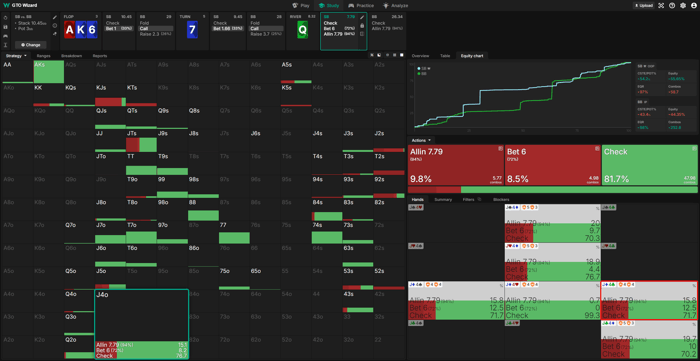
The optimal solution for SB here would be to split our strategy between block bets (bet up to 33% of pot) and all-ins, but Winter decided to play a much more creative strategy by almost going all-in. After solving the spot with both strategies, we saw that Winter’s hyper-creative strategy is only losing 0.3% table equity, compared to the best possible strategy (if villain counters SB’s deviation perfectly). This means that going almost all-in is still valid and quasi-optimal strategy in this spot.
Going almost all-in allows Winter to gather enough folds while still surviving after getting called (or jammed on) and still allowing the low possibility of a payjump. While not being optimal holding the J♦ which blocks BB’s turned flush draws that missed the river, it’s still a relevant blocker to villain’s straights and flushes.
BB river strategy facing a ~3/4 pot sized bet
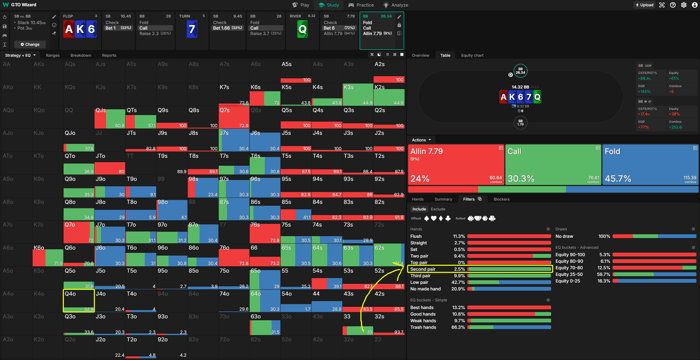
BB’s optimal river defense strategy might surprise you. Since BB has almost no top pair given the preflop action, SB should triple barrel the river with value for this bet size as low as second pair (and even a sliver of third pair). For this reason BB’s third pair won’t have any lower equity than ~32%. Against roughly ¾ pot he needs around 30% equity to call, which makes the call with Qx a required one.
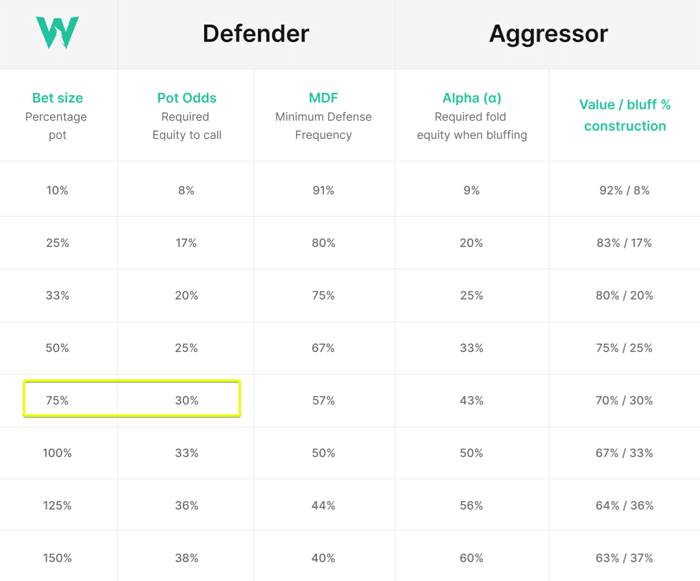
SB’s bet is designed to make hands with 30% equity indifferent, as calling or folding with 30% equity against this bet size is both 0 EV. As you can see, BB is forced to call this bet with low pairs ~⅓ of the time and avoid being exploited, as these hands have roughly enough equity to hit the point of indifference. If Davies would be folding these pairs always, Winter could get away with always betting his bluffs profitably on the river according to MDF.
Daily Dose of GTO FREE Download
Conclusion
Setting aside the slight preflop deviations, both players played extremely close to optimal and demonstrated competence of the highest degree. The triple barrel with the blocker to nutted hands, and the calldown with third pair on such a scary looking board shows that these players have a strong understanding of ranges and poker theory very well. This is what skilled poker looks like!



